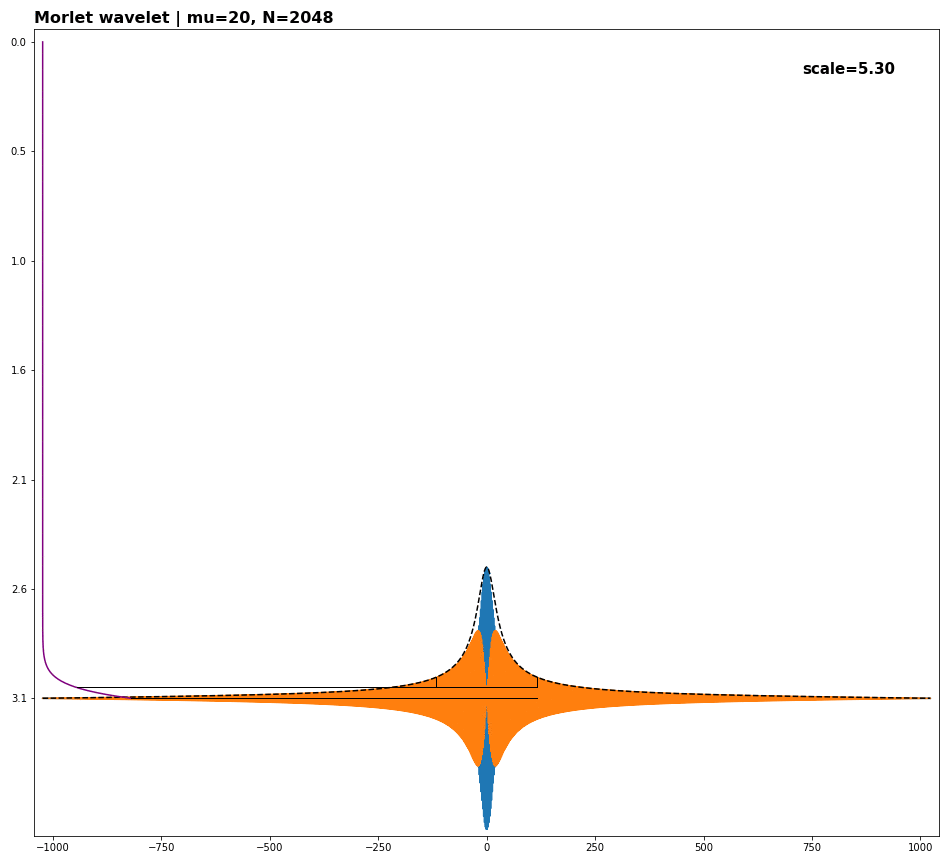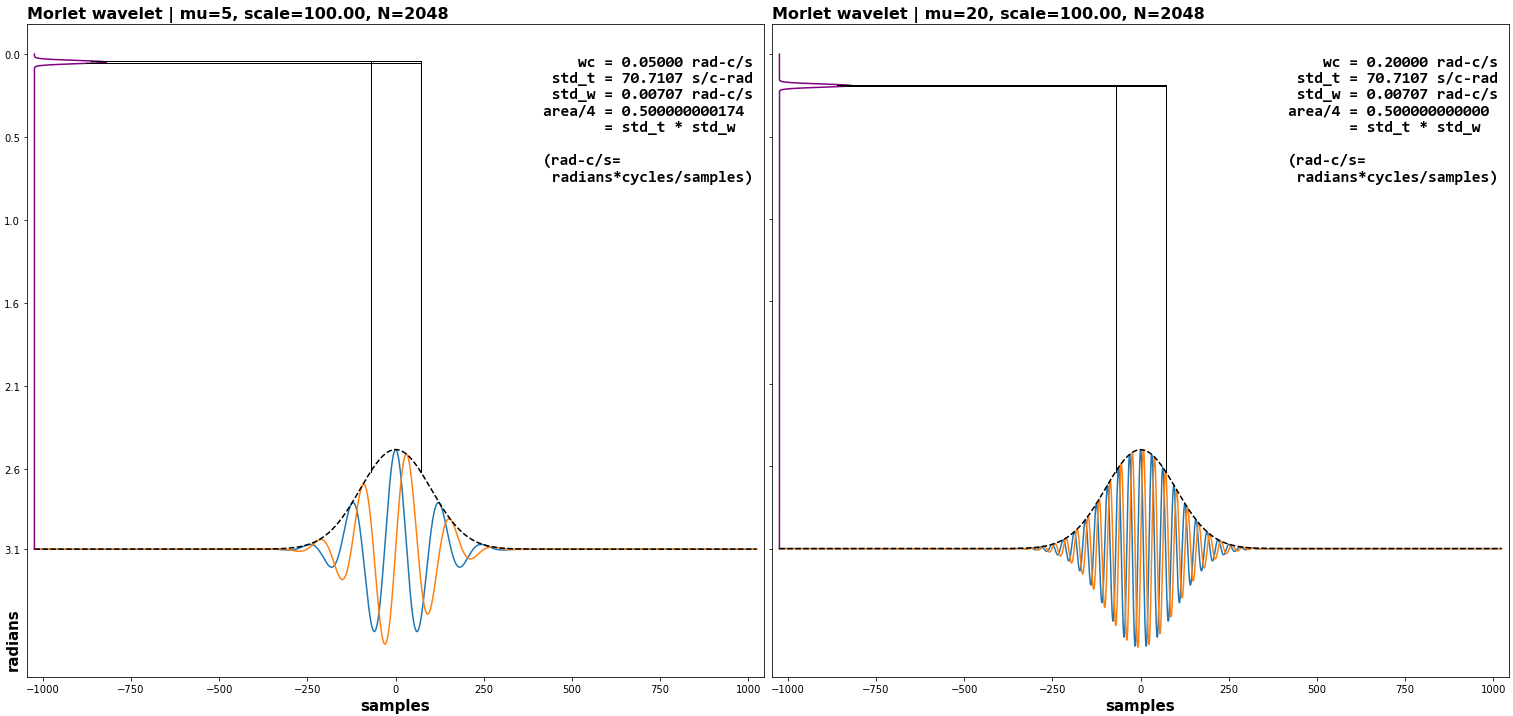Synchrosqueezing in Python
Synchrosqueezing is a powerful reassignment method that focuses time-frequency representations, and allows extraction of instantaneous amplitudes and frequencies. Friendly overview.
Features
- Continuous Wavelet Transform (CWT), forward & inverse, and its Synchrosqueezing
- Short-Time Fourier Transform (STFT), forward & inverse, and its Synchrosqueezing
- Wavelet visualizations and testing suite
- Generalized Morse Wavelets
- Ridge extraction
- Fastest wavelet transforms in Python1, beating MATLAB
1: feel free to open Issue showing otherwise
Installation
pip install ssqueezepy. Or, for latest version (most likely stable):
pip install git+https://github.com/OverLordGoldDragon/ssqueezepy
GPU & CPU acceleration
Multi-threaded execution is enabled by default (disable via os.environ['SSQ_PARALLEL'] = '0'). GPU requires CuPy >= 8.0.0 and PyTorch >= 1.8.0 installed (enable via os.environ['SSQ_GPU'] = '1'). pyfftw optionally supported for maximum CPU FFT speed. See Performance guide.
Benchmarks
Code. Transforms use padding, float32 precision (float64 supported), and output shape (300, len(x)), averaged over 10 runs. pyfftw not used, which'd speed 1-thread & parallel further. Benched on author's i7-7700HQ, GTX 1070.
len(x)-transform |
1-thread CPU | parallel | gpu | pywavelets | scipy | librosa |
|---|---|---|---|---|---|---|
| 10k-cwt | 0.126 | 0.0462 | 0.00393 | 3.58 | 0.523 | - |
| 10k-stft | 0.108 | 0.0385 | 0.00534 | - | 0.118 | 0.0909 |
| 10k-ssq_cwt | 0.372 | 0.148 | 0.00941 | - | - | - |
| 10k-ssq_stft | 0.282 | 0.147 | 0.0278 | - | - | - |
| 160k-cwt | 2.99 | 1.25 | 0.0367 | 12.7 | 10.7 | - |
| 160k-stft | 1.66 | 0.418 | 0.0643 | - | 1.93 | 1.38 |
| 160k-ssq_cwt | 8.38 | 3.16 | 0.0856 | - | - | - |
| 160k-ssq_stft | 4.65 | 2.48 | 0.159 | - | - | - |
Examples
1. Signal recovery under severe noise
2. Medical: EEG
3. Testing suite: CWT vs STFT, reflect-added parallel linear chirp
4. Ridge extraction: cubic polynom. F.M. + pure tone; noiseless & 1.69dB SNR
5. Testing suite: GMW vs Morlet, reflect-added hyperbolic chirp (extreme time-loc.)
6. Higher-order GMW CWT, reflect-added parallel linear chirp, 3.06dB SNR
Introspection
ssqueezepy is equipped with a visualization toolkit, useful for exploring wavelet behavior across scales and configurations. (Also see explanations and code)
Minimal example
import numpy as np
import matplotlib.pyplot as plt
from ssqueezepy import ssq_cwt, ssq_stft
def viz(x, Tx, Wx):
plt.imshow(np.abs(Wx), aspect='auto', cmap='turbo')
plt.show()
plt.imshow(np.abs(Tx), aspect='auto', vmin=0, vmax=.2, cmap='turbo')
plt.show()
#%%# Define signal ####################################
N = 2048
t = np.linspace(0, 10, N, endpoint=False)
xo = np.cos(2 * np.pi * 2 * (np.exp(t / 2.2) - 1))
xo += xo[::-1] # add self reflected
x = xo + np.sqrt(2) * np.random.randn(N) # add noise
plt.plot(xo); plt.show()
plt.plot(x); plt.show()
#%%# CWT + SSQ CWT ####################################
Twxo, Wxo, *_ = ssq_cwt(xo)
viz(xo, Twxo, Wxo)
Twx, Wx, *_ = ssq_cwt(x)
viz(x, Twx, Wx)
#%%# STFT + SSQ STFT ##################################
Tsxo, Sxo, *_ = ssq_stft(xo)
viz(xo, np.flipud(Tsxo), np.flipud(Sxo))
Tsx, Sx, *_ = ssq_stft(x)
viz(x, np.flipud(Tsx), np.flipud(Sx))
Also see ridge extraction README.
Learning resources
- Continuous Wavelet Transform, & vs STFT
- Synchrosqueezing's phase transform, intuitively
- Wavelet time & frequency resolution visuals
- Why oscillations in SSQ of mixed sines? Separability visuals
- Zero-padding's effect on spectrum
DSP fundamentals: I recommend starting with 3b1b's Fourier Transform, then proceeding with DSP Guide chapters 7-11. The Discrete Fourier Transform lays the foundation of signal processing with real data. Deeper on DFT coefficients here, also 3b1b.
Contributors (noteworthy)
- David Bondesson: ridge extraction (
ridge_extraction.py;examples/:extracting_ridges.py,ridge_extraction/README.md)
How to cite
Short form:
OverLordGoldDragon, ssqueezepy, 2020. GitHub repository, https://github.com/OverLordGoldDragon/ssqueezepy/. DOI: 10.5281/zenodo.5080514
BibTeX:
@article{OverLordGoldDragon2020ssqueezepy,
title={ssqueezepy},
author={OverLordGoldDragon},
journal={GitHub. Note: https://github.com/OverLordGoldDragon/ssqueezepy/},
year={2020},
doi={10.5281/zenodo.5080514},
}
References
ssqueezepy was originally ported from MATLAB's Synchrosqueezing Toolbox, authored by E. Brevdo and G. Thakur [1]. Synchrosqueezed Wavelet Transform was introduced by I. Daubechies and S. Maes [2], which was followed-up in [3], and adapted to STFT in [4]. Many implementation details draw from [5]. Ridge extraction based on [6].
- G. Thakur, E. Brevdo, N.-S. Fučkar, and H.-T. Wu. "The Synchrosqueezing algorithm for time-varying spectral analysis: robustness properties and new paleoclimate applications", Signal Processing 93:1079-1094, 2013.
- I. Daubechies, S. Maes. "A Nonlinear squeezing of the Continuous Wavelet Transform Based on Auditory Nerve Models".
- I. Daubechies, J. Lu, H.T. Wu. "Synchrosqueezed Wavelet Transforms: a Tool for Empirical Mode Decomposition", Applied and Computational Harmonic Analysis 30(2):243-261, 2011.
- G. Thakur, H.T. Wu. "Synchrosqueezing-based Recovery of Instantaneous Frequency from Nonuniform Samples", SIAM Journal on Mathematical Analysis, 43(5):2078-2095, 2011.
- Mallat, S. "Wavelet Tour of Signal Processing 3rd ed".
- D. Iatsenko, P. V. E. McClintock, A. Stefanovska. "On the extraction of instantaneous frequencies from ridges in time-frequency representations of signals".
License
ssqueezepy is MIT licensed, as found in the LICENSE file. Some source functions may be under other authorship/licenses; see NOTICE.txt.




















